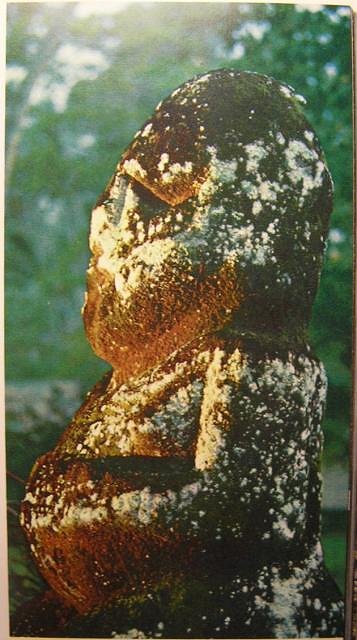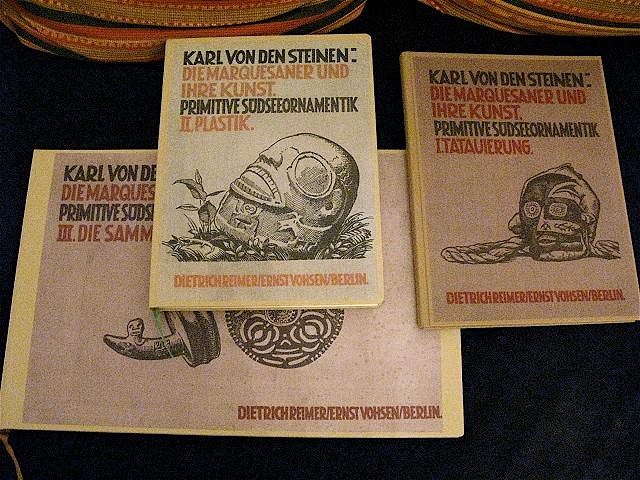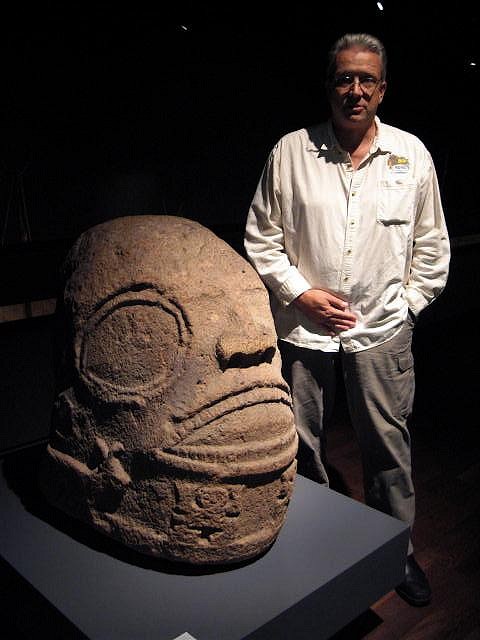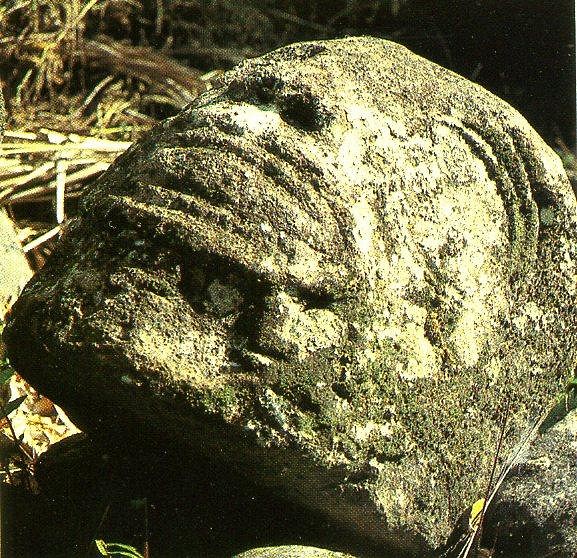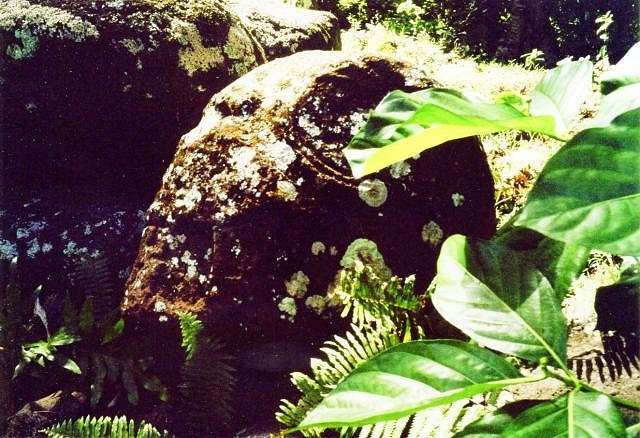Pages: 1 19 replies
|
B
bigbrotiki
Posted
posted
on
Sat, Mar 28, 2009 2:58 PM
That brings up the (to me) fascinating question of Tiki and Oceanic art preservation vs. art appropriation by a foreign power. The common explanation (or excuse?) that 19th and 20th Century European hunters and collectors of Oceanic art used to take carvings away from the villages and communities they found them in and stick them into museums or sell them to private collectors is the following (apart from acquiring them from the tribe in trade): In Oceanic mythology, carvings of ancestors deities were often (but not always) intended as temporary vessels to invoke the deity's spirit to reside in them for a limited time, like a particular ritual, or a certain period like harvest time. After that, they became worthless, and were discarded in the jungle or left to rot. But what did that mean to the CULTURAL tradition of a people? Whole areas in the South seas got "de-forested" of all antique tribal art, and tens of thousands of items now lie in storage in Western museums. Is that OK? To me it raises two questions: Below I am using an example (inspired by Zeta's post above) that clearly speaks FOR the museum ownership as guaranteeing the preservation of an art piece for future generations everywhere: In the late 1800s German art historian Karl von den Steinen travelled to and lived in the Marquesas Islands, and with German perfectionism recorded and cataloged all remaining Marquesan art he could find. Lots of it had already disappeared, the native population had been severely decimated by Western diseases, and with that many traditions had been lost. But today von den Steinen's studies, published in three volumes at the turn of the century, are used as templates for classic tattooing and carving that would have been lost otherwise, also:
For the cover of his volume on statuary, he used a giant stone carving of the ancestor Manuiotaa, which he loaded on a freighter, and brought it back to the Berlin Museum of Anthropology. There it still resides today:
Interestingly so, the temple site where the stone head came from, Iipona on Hiva Oa, http://www.galenfrysinger.com/meae_iipona_marquesas.htm
Not so when I came upon it in 2002, during my visit with the Aranui:
Its facial features are so washed out, the above website doesn't even show the piece anymore. In any case, the question posed here does not fully concern the lovers of mid-century and contemporary Tiki culture, because we wholeheartedly promote the promulgation of Polynesian INSPIRED Tiki art, not ORIGINAL Tiki art --which is just AS fascinating ...and eminently more affordable! :) But it is of interest to all who philosophize about the origins of the Western obsession with "primitive" art. I invite everyone to add their thoughts on the above questions in this thread. [ Edited by: bigbrotiki 2009-03-29 08:56 ] |
|
TT

Trader Tom
Posted
posted
on
Sat, Mar 28, 2009 10:00 PM
Quote: Bigbrotiki wrote: To me it raises two questions: These are tough questions, but I'll add my own musings. The religious question first... Just because an object is no longer used for a specific ceremony that it was created for does not mean that it has been divested of religious significance. For instance, there are marvelous communion sets made of precious metal that are not used for communion, but that nonetheless inspire religious awe when viewed. There are marvelous reliquaries that hold the remnants of saints and are no longer the focus of yearly mass pilgrimages, but they still inspire religious feelings in those individuals that visit them. Just because a religion has died out does not mean that an object loses its significance, either. Egypt and Greece have fought and are still fighting to have objects returned even though the ancient gods of Greece and Egypt are now just regarded as myth. Conservation and preservation are well and good, but many art pieces have a national significance and it seems tremendously unfair to rob people of the opportunity to see their national treasures so that only well-heeled westerners can appreciate them. Especially, when, with some cooperation, it might be possible to conserve or preserve items closer to their original locations. At the least, it would seem fairer if these items were loaned out in traveling collections so that past colonial intrusions/looting expeditions aren't stopping people from learning about their native history. The universal relevance question now... It seems to me that most of the art that is considered universally relevant is art that has been reproduced over and over until it sinks into our collective unconscious. Or pieces have had such an influence on history that by extension they have influenced all our individual lives. I'm sure there are lots of significant pieces that are of immense importance to a specific group or geography, but I think it's their INFLUENCE which is the key factor. I remember my freshman art professor lecturing about the distinction between "genius" and "intelligence"...and how someone may have a high IQ and be a member of MENSA, but that doesn't qualify them as a genius. A genius has lasting influence over their generation. I think this holds true for art. There may be art that is accomplished, beautiful, or significant, but to be universally relevant I think we have to see that its influence has been universally sweeping. Or, that it has the potential to be that influential if given the proper showcasing for future generations. If the INFLUENCE is undeniable for all the world, then that art has to be preserved and cared for in a manner that makes it available to everyone. Otherwise, why not leave it in the hands of the people that care about it the most? Anyway, I'm sure books could be written about this, but those are just my thoughts off the top of my head. |
|
B
bigbrotiki
Posted
posted
on
Sat, Mar 28, 2009 11:13 PM
But the Greek and Roman art is now requested to be returned for its cultural value, not the original religious one.(You did say something to that effect). The relics of dead religions become cultural (and sentimental) symbols of a culture...at least until the religions are revived again! And I agree, the new generations should have the opportunity to learn about their own history. It seems to be a centuries old story that often OTHER nations appreciate some foreign people's art more than the people themselves who see it everyday. Only after it is gone, years and years after the fact, does it dawn on people that maybe it was part of their identity. As if someone else has to like what you see as common, before you can recognize its value yourself. It seems to be a maturing process: A culture from time to time has to shed itself from its tradition to reinvent itself. Another culture, that has a greater distance to the tradition, sees it for its inherent value and takes it over. Then, after "growing up", the original culture looks back at itself with a better understanding and wants it back. And about point two: I guess "world art" was not the right term, reaching to high. Or can a whole art form have a collective genius that influences the whole world and thus becomes part of it? [ Edited by: bigbrotiki 2009-03-28 23:33 ] |
|
S
Sophista-tiki
Posted
posted
on
Sun, Mar 29, 2009 8:25 AM
wouldn't that be called "monkey see monkey do" There is new museum thinking and laws being enacted about repatriation of artifacts. Cases could be made to have all looted artifacts returned to their countries of origin, and counter cases could be made to keep them in the collection in which they are currently being preserved. It seems to me that most artifacts of antiquity were originally looted and pompously justified in the name of the country where they currently reside. I agree that many of these artifacts and works of art would probably be lost if they had not been squirreled away in the collection of the worlds greatest museums. However , if the country of origin wants to reclaim objects they have every right to. in most cases these countries now have the capabilities to care for the objects keeping them preserved and building their own historical identity in the process. Its not that looted cultures didn't recognize the significance of their artifacts, I think that it was just lost in their history for some time. If a significant work of art was looted form its original people, or found after centuries by a foreign explorer and just "claimed" and whisked away How would the native peoples even have a chance to realize what they were missing? |
|
T
tikiauction
Posted
posted
on
Sun, Mar 29, 2009 8:48 AM
While I am not sure that this is even a valid criteria for requesting repatriation, the fact is a rural marquesan community is not going to have the resources to preserve and study the artifacts. think about it, we in the west have exported the idea that the good life is the modern western life to just about every corner of the globe. to an average imporverished person living in the third world, what good is a rotting piece of rock out in the jungle. would they expend energy and economic resources to preserve it or would they save up and buy the lastest fashions and dvds from hollywood? in fact, why not sell the former to get the latter? i've seen it happen firsthand in cambodia, in papua new guinea, even in puerto rico. only as a society prosper would they begin to look inward to see that what is valuable to their cultural identity was there all along in the form of that rotting piece of rock. places like hawaii and new zealand, where the indigenous people fiercely guard and treasure their cultural heritage have undergone that transformation, but many other societies are still entrapped in the first scenario. |
|
B
bigbrotiki
Posted
posted
on
Sun, Mar 29, 2009 9:22 AM
And what about the fact that even for the Western artist, being accepted and displayed in a museum means that they "have made it"? Could the native artist not experience the same satisfaction knowing that his work is now worthy of being exhibited to the world? Even if considering the fact that in native art, the individual maker is often not identified, the community the piece came from could feel acknowledged. Even if the piece is not only regarded as art only, but has a spiritual background. Western consciousness has certainly evolved from the early days of collecting indigenous art when these objects where viewed as curiosities, to first recognizing them as art, and then developing a genuine interest in their spiritual origins. |
|
S
Sophista-tiki
Posted
posted
on
Sun, Mar 29, 2009 9:26 AM
if you are specifically referring to an impoverished third world country, the chances are that a remote village would not be the sole destination of a repatriated object the likely scenario would be a national government funded museum. that doesn't mean that it has to be a state of the art facility museums come in all sizes, some of the best museums are only a couple of rooms and staffed by one volunteer. they may not know the ins and outs of higher educated study of artifacts but simply the fact that its there provides an avenue for some one from "western civilization" to travel there and study, and even making an impact on contributing to the native history and culture. |
|
T
tikiauction
Posted
posted
on
Sun, Mar 29, 2009 12:19 PM
the new yorker has had some nice articles on antiquities repatriation (mainly greek and roman) over the last several years; and the consensus does seem to be that all the classical antiquities will eventually be returned to the country of origin, in exchange for some pieces to be on long-term semi-permanent loan to the museums in the west. i don't doubt that the island nation of yap can try to take that tack, but their negotiating/political clout is going to be much less than say the nation of greece or italy for the reasons mentioned. in any case, the return for loan approach does seem to be the new compromise that is taking shape. |
|
S
Sophista-tiki
Posted
posted
on
Sun, Mar 29, 2009 7:26 PM
good point I'm going to read those articles. during the course of the day I discussed this topic with several of my museum friends and got all kinds of feedback on every-side of the issue. Mostly the first thing everyone said was "thats stuff was stolen in the first place and how imperialistic of Westerners to assume it only becomes art because they say so.....on and on it went is was like I opened a big can of worms. but good discussion never the less. edited for rum induced spelling errors [ Edited by: Sophista-tiki 2009-03-29 19:45 ] |
|
S
Sophista-tiki
Posted
posted
on
Mon, Mar 30, 2009 7:28 PM
loot loot loot, loot loot loot, loot loot loot Im suprised my righty whity comment didt get more response |
|
B
BettyBleu
Posted
posted
on
Tue, Mar 31, 2009 7:13 AM
not saying that all the historical/cultural material in Western society is the direct result of illicit trade but for the sake of discussion, if ya gave it all back (without the option for loan), we'd have to close all the cultural history museums ...or just show stuff from the island nation of yap. |
|
S
Sophista-tiki
Posted
posted
on
Tue, Mar 31, 2009 8:05 AM
another good point. alot of the best museum displays are " manufactured" replicas and all the biggest museums have millions of ill begotten objects stored in warehouses and basements. theres probably enough to go around. |
|
M
MadDogMike
Posted
posted
on
Wed, Apr 1, 2009 2:29 PM
How is stealing art any different than stealing land, gold, natural resources, slaves, etc? Ever since Cain figured out he was bigger and stronger than Abel, the strong have stolen from the weak. Every bit of land on this earth (including the one where YOUR house sits) used to belong to someone else and was taken by force or some sort of fraudulent deal ie $28 worth of beads for Manhattan Island (if that actually happened) So is stealing art right? Of course not. Is art repatriation a good thing? Probably, in some cases. But sending a few marble statues back to Greece isn't going to fix 10,000 years of "might makes right". |
|
Z
Zeta
Posted
posted
on
Fri, Feb 5, 2010 9:47 PM
I bet JOHN-O would love this thread... :wink: I felt guilty when I moved a big part of my Spanish vintage tiki mug collection to Mexico... BUT also felt that way more people could see it in America and enjoy and learn from it. Appreciate it, protect it. Preach the tiki gospel in far away lands. Truth is, if I didn't collected this Iberian ceramics, they would probably end up broken or lost. |
|
G
Gigantalope
Posted
posted
on
Sat, Feb 6, 2010 9:04 AM
I've often felt the urge to set up a bar decorated with Stuffed Mormons on ten-speeds for decore. |
|
8T
8FT Tiki
Posted
posted
on
Sat, Feb 6, 2010 2:17 PM
Sven, your discussion reminds me of the controversy encountered by Thor Heyerdahl when he removed the artifacts from Easter Island. Many of the pieces had never been seen by a Westerner before and you can imagine his excitement when he was "given" them or "traded" for them. But would it have been better to have established a museum for the pieces on their native island? Anyone following this thread who has not had the chance to read about Heyerdahl's visits to Rapa Nui should definitely get and read his book 'AKU AKU'. Here's a picture of the mayor at the time of Heyerdahl's visit and other islanders who helped him acquire the items he sailed off with.
|
|
B
bigbrotiki
Posted
posted
on
Sat, Feb 6, 2010 3:00 PM
After that, though, there also was a discussion about the authenticity of many pieces, especially those found in the caves. The allegation was that some had been made for Thor to find them. The islanders liked Thor, Thor apparently really liked those old stone carvings -- so they made some for him! :) Luckily we will never have that problem, in-authenticity is the hallmark of our collecting. Actually, we just mentioned here on TC how some e-bay and flea market sellers label their wares as being from The Luau, or other Tiki power places. Or imagine we would find a wooden Tiki in a thrift store and we would discover it was actually ancient pre-contact Hawaiian...an outrage! |
|
J
JONPAUL
Posted
posted
on
Sat, Feb 6, 2010 3:22 PM
Drool...Slurp...Wipe...Drool...Drool...Wipe.
Sven, is this your personal copy? |
|
S
SuperEight
Posted
posted
on
Sun, Feb 7, 2010 2:02 AM
I remember as a kid going to an exhibit at the Bishop Museum on the last day. I remember ancient Hawaiian helmets and art pieces among the works that had been loaned by the British Museum and other mostly English collectors. As I remember sailors and some academics had originally acquired the pieces (through I imagine either theft or trading). The mostly Hawaiian docents were very teary eyed about the pieces going back to England and felt their heritage was leaving them. I told my dad that I felt bad about that but he told me that often people don't value what they have in their culture until someone else puts it in their own museum or puts a price tag on it. It was an interesting point. I also know that a great deal of Hawaiian tiki's and other art works were destroyed as "pagan idol" when christianity took hold. Works of art are better off stolen and studied than burned. Remember the statues that the Taliban blew up? They actually asked that they be taken away and foreign academics pleaded that they needed to stay in their native country. Now they are dust. And finally having spent some time in the tropics, I know that anything not carved in stone rots away with alarming speed. There is no way that ancient artisans thought of their works as permanent. Losing pieces might have been traumatic, but its not like they hauled away the Taj Mahal or parts of the Parthenon (which did happen) or something else built to stand there forever. They were an impermanent art form that were going to rot eventually and the artisans and the indigenous owners knew that. I am as sensitive as the next guy about the white man coming in and plundering the treasures of a people. But the plundering of some of these ancient art forms has actually led to the culture being recorded forever. |
|
B
bigbrotiki
Posted
posted
on
Sun, Feb 7, 2010 8:44 AM
I agree. The difficulty is that not ALL carvings were meant to be discarded to rot after their ceremonial use. But it is impossible to assess nowadays WHICH were intended to be permanent cult objects ....and where to return them too. Many of the cults/cultures that these pieces hailed from do not exist anymore. Though the advance of white Western culture has caused their disappearance, it did not ALL happen forcefully. Often these godheads were dispatched voluntarily, as natives destroyed their idols themselves to join the new belief and order. Man is always quick to want the next new shiny thing, letting prior achievement fall by the wayside and be forgotten...as happened to Tiki culture. :) A couple of years ago there was a scandal at the Bishop Museum, when an employee heeded the restitution claims of a Hawaiian native interest group (of which there are several) and gave them some artifacts from the museum without clearing it with the board. The items where then clandestinely placed into a secret burial cave by that group, as the group felt that that was where they belonged. Well, being valuable artifacts, they swiftly disappeared from the cave, never to be heard of again. I am all for cultures being revived and ancient traditions being kept alive, but most are minorities now that do not have the means and organization to safely repatriate pieces. Papua New Guinea's government for example is in constant flux, with bribery rampant. A soon as anything of high value gets placed into those unstable environments, it is up for grabs. This might sound arrogant, but I belIeve I merely see it pragmatically. [ Edited by: bigbrotiki 2010-02-07 12:39 ] |
Pages: 1 19 replies

